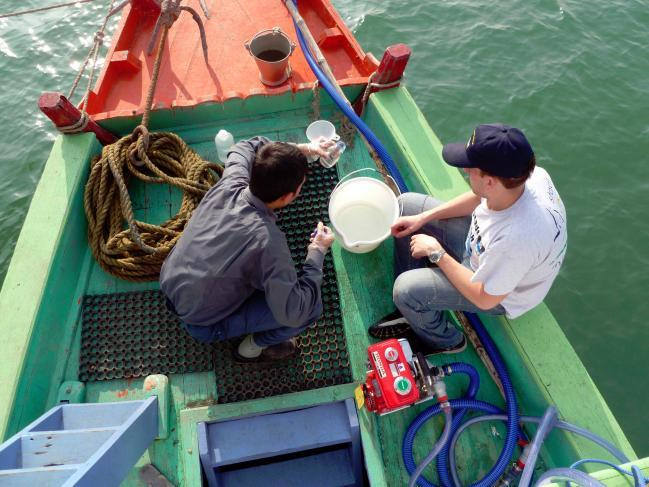In the northern Bay of Bengal, embracing the border between India and Bangladesh, the world‘s largest mangrove can be found. The Sundarbans, also the home of the Royal Bengal Tiger, represents one of the most productive ecosystems on our planet. With every flood, the swamplands submerged. With the incoming tide, the habitats for aquatic organisms widen and a huge number of bentho-pelagic exchange processes can take place. Dependent on the regional factors, soluble nutrients but also solids can be exported or brought into the area. As UNESCO World Nature Heritage and Biosphere Reserve, the anthropogenic activities committed directly in the Sundarbans are reduced to a minimum. Thereto it is a suitable place where natural fluxes can be observed comparatively well.
In addition to the Matla estuary in the Sundarbans, the project also deals with the River Hooghly. Similar to the Sundarbans, the Hooghly is linked to the River Ganges. As biggest difference in contrast to the Matla estuary, the Hooghly passes densely populated and highly industrialized areas (e.g. Kolkata).Hence it serves manifold purposes and religious rituals, the anthropogenic signature is obvious. But even here, more than 50 km upstream the river mouth, the tide plays a major role for the fluxes and is and the impact of macrotidal variation on biogeochemistry is in the interest of BIOVIBEN.
Notably, the dynamics of dissolved and particulate nutrients in estuaries and rivers shed light on the natural variability of steering mechanisms, e.g. the seasonal influence of monsoon, tides as well as the use of water bodies and the hinterland, respectively. Due to these facts there is a dynamic of Vibrio Cholerae, about which, especially in seasonal and spatial distribution, the project team hopes to gain new knowledge. The team focuses on the interaction between the Vibrio bacteria and suspended particles as well as the question how V. Cholerae acquires its pathogenity and can be transferred to drinking water.
Already in 1884 the German bacteriologist Robert Koch discovered Vibrio Cholerae, the causative agent of Cholera, in the Sundarbans. Still today, there are several outbreaks a year. Even though the abundance of V. Cholerae in the estuaries of West Bengal is well known, there are no systematic studies available, dealing with systematic relations between water chemistry and season-related dynamics of Cholera outbreaks. The project BIOVIBEN deals with those relations in tight collaboration with the National Institute of Cholera and Enteric Diseases (NICED) in Kolkata.
Project Partners (Germany) |
International Project Partners | |
|---|---|---|
|
National Institute for Cholera and Enteric Diseases (NICED) (Kolkata, India) |





